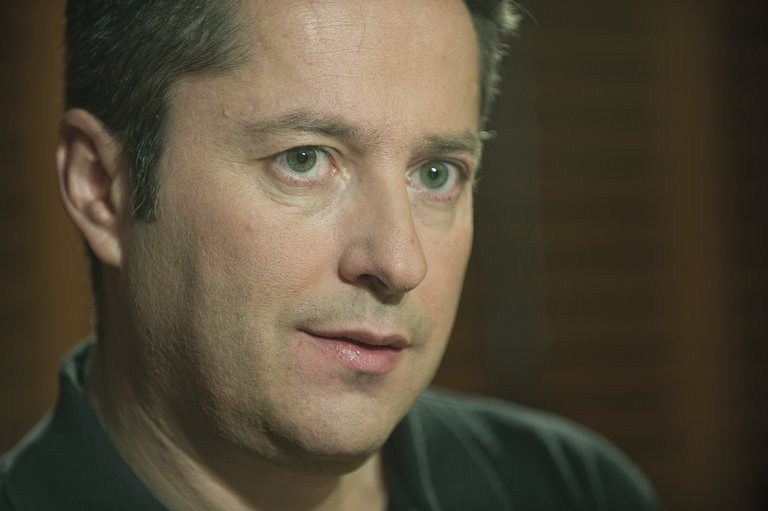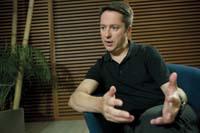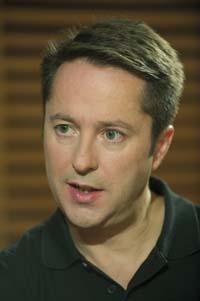"From the moment a quantum computer is manufactured, there will be only one way to send secret information"

It is unusual for a person who is researching quantum physics to look at the world of applications. Cirac sought it and it is clear that it does well for its international prestige. The consultant Thomson Reuters has been elected candidate for the Nobel Prize in Physics. Who knows.
Yes, yes. I started in this field long ago. And at that time there were no awards, very few people worked and looked like a very exotic setting. Over time, people have realized that this is a promising field in which not only physicists but chemists, mathematicians, computer scientists and scientists from other disciplines have gathered. It has become a great field within science. And those of us who were somehow pioneers, we have to collect the prizes.
Fortunately it gives me the opportunity. In fact, it is one of the things this institute offers and that was one of the reasons to come here. We have a very good administration, very effective, take away almost all administrative work.
My scope is quantum information, and within it are both. It has a number of features related to computing, others related to cryptography, also communication or simulation, and everything is included in quantum physics. That's why I work on cryptography, computers, simulation, etc.
Per day. As we have many projects at once, sometimes some are more interesting, more exciting or we make a discovery... Priorities depend on what I have done lately.

There is more than one challenge. The main challenge is to build a quantum computer of the power we want. At the moment, we can only make small prototypes, which means that we know the physical laws well, we know how to do it and that the things we think are correct. But we lack a technological development to build a large quantum computer. It may be long; it may be ten, fifteen, twenty, forty, fifty years. However, for other applications such a large quantum computer is not necessary. We also work on these applications in a shorter time frame.
They are small prototypes that do not perform as many calculations as quantum physics makes possible. We work with qubits equivalent to the bits of conventional computing. For a quantum computer to be of great power, it should contain approximately one million qubits. So far we have managed to make a 14 qubit computer, so we have a long way ahead, but with these 14 qubit we know how to do some quantum calculations and we have shown that things work.
Yes, yes... Of course, we still have to develop the field of quantum computing. Many algorithms and software are yet to be developed. But if we now had a quantum computer, we could get a lot of out of it. Above all we could perform quantum simulations, which would allow us to work on material design. Also in the design of chemical reactions and drugs, we know how to perform this type of work and the quantum computer would give us much more capacity than the traditional computer.
The problem is that they are still very expensive, much more expensive than conventional encryption systems, and for the moment there is no reason to discard them. When a reason appears, quantum encryption systems will be standard or at least more important, especially when developed technologically, improve performance, reduce prices, etc.
But why do we need a quantum cryptography system? That's related to quantum computer research. If we make a quantum computer, the current cryptographic systems (those we use to buy on the Internet by credit card, those used by governments to send secret messages, etc.) would not be safe. Quantum computers can decode any message. The only possibility to protect against these computers is the use of these quantum encryption systems. From the moment a quantum computer is manufactured, it is the only way to send secret information.

Quantum cryptography is done through the phenomenon known as quantum telegarraio; information disappears from one place and appears in another without making the intermediate path. And that's why it's safe, nobody can stop it because it doesn't go through the hole. Complicated light situations are used for this purpose. They are photon pairs, each photon is sent to one place and thanks to those photons the information passes from one place to another. The main problem is that photons that present these complicated situations in their current experiments can distance between 20 and 30 kilometers. The record is 150 kilometers, but it is an exception. Usually they are between 20 and 30 kilometers. And that means we can only communicate at these distances.
Well, it's not bad, it meets the cryptographic needs of a fairly large city, but it doesn't communicate two cities, for example when there are 80 kilometers between each other.
It is true that some hackers have benefited from systems that did not have the correct implementation of quantum cryptography. In fact, there is still no completely correct implementation. Companies that sell these products also know that they do not implement as quantum physics would require, so they are not entirely safe. In Norway and in some experiments in Singapore some of these systems have been bought and have proven that they are not fully constructed, that they leave some doors open and that, therefore, the information is available.
Buletina
Bidali zure helbide elektronikoa eta jaso asteroko buletina zure sarrera-ontzian











